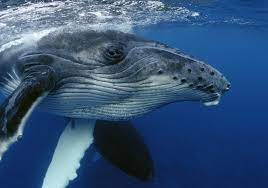A collection of lucky escapes
Animals around the world are threatened with extinction in different ways but there is still hope to save those species who are at the brink of vanishing forever. Since the 1960s, various organisations, governments and individual conservationists have made several efforts to stop human practices that harm such species and have taken great measures to increase the population of species that have sparse inhabitants.
Governments across the globe have established several acts and wildlife sanctuaries to ascertain the safety and preservation of these varied species. The following are five animals which were once critically endangered but then saved by the aforementioned efforts :
Humpback Whale - This mammal, popularly known as the singing whale, went almost extinct in the 1960s, a period in which it was commercially hunted. The newly made efforts to preserve wildlife came through as the ESA -The Endangered Species Act- and individual nature conservationists who worked to protect the animal and increase its populace. The number of whales, which was as astonishingly low as 1600 has now increased to 20,000 humpback whales around the globe, all with the said endeavour. The animal has now been taken off the endangered list from a few of the habitats around the world.
Sea Otter- They are cute, furry mammals that feed on clams and sea urchins, who otherwise have the ability to devour entire kelp forests. Thus, they are essential for the survival and balance of coastal ecosystems around the North Pacific Ocean. However, they were hunted extensively for their rich fur back in the eighteenth century. Their numbers had fallen to a staggering low of 2000 otters. An international ban was implemented on hunting these otters and reintroduction programmes were put in place for the population to grow. The sea otters now occupy two-thirds of their former populace.
Blue Whales - These beautiful majestic giants are the largest animals to ever exist and human kind has been lucky enough to witness their elegance. Measuring up to 33 meters high and weighing around 130 tonnes, they were once found in abundance in our oceans. These massive whales were hunted for their oil and fat which are used to make products like soap, margarine and lamp lights, causing them to be hunted at large. Hundreds and thousands of these blue whales were slaughtered for such products in the early to mid-twentieth century. They were eventually given legal protection in the year 1966 by the International Whaling Commission. Their number have slowly recovered, although there are still far fewer whales then there once were.
Bald Eagle - The National bird of the United States of America almost went extinct at a point in time. Their number was significantly reduced due to destruction of their habitat, illegal hunting of the bird and chemical contamination by DDT. DDT was banned in the year 1972 and conservation plans were implemented to increase their population and preserve the species. These implemented plans worked in their favour and the numbers began to rise. Their numbers, once alarmingly low as 400 breeding pairs back in 1963, gradually increased to over 70,000 now. It has been a commendable feat and they were taken off the endangered list in 2007.
Grizzly Bear - The bear population has plummeted due to a number of reasons such as loss of habitat, hunting and low birth rates, reducing the Yellowstone grizzlies to a mere number of 136 in 1975. The Californian and Mexican grizzlies have become extinct but the Yellowstone grizzlies have recently been taken off the endangered list. As of 2019, there are believed to be more than 728 of these grizzly bears inhabiting the Yellowstone. This is considered to be a miraculous event as they were expected to go extinct but thankfully, the collective strive to save them was successful; they were constantly monitored, their human interaction was minimized and they were introduced to a natural environment inside the park.
Although hunting and habitat loss can't be stopped completely, methods can be implemented to preserve our wildlife. Sustainability is the key to the problems faced by the modern day man. Allotment of special wildlife zones and collective efforts from various individuals and organizations have managed to save a few species. Nevertheless, we have a long way to go. We as individuals can also contribute to this cause by using sustainable, cruelty-free products in order to save the majestic creatures we witness around us.







This is so informative!!! Looking forward to tomorrow's session Woohoo!! 🥳
ReplyDeleteVery well written and informative !!
ReplyDelete👍🏾
ReplyDeleteInteresting!!
ReplyDelete